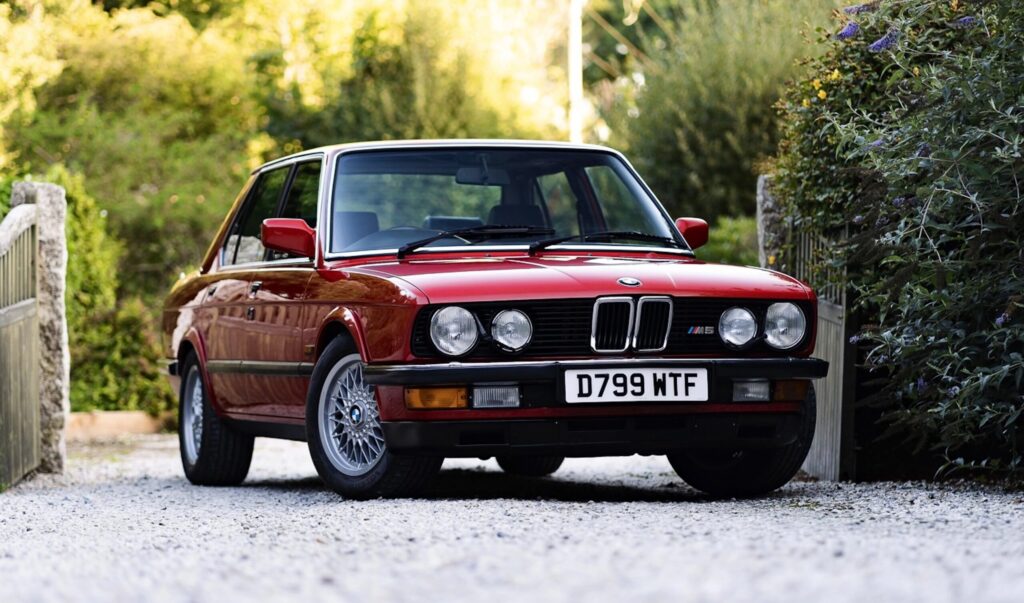
As the 1980s progressed, so did the development of the BMW E28 5 Series. The 1986 BMW E28 continued the brand’s commitment to luxury, performance, and innovation, while still maintaining a clear link to its heritage. This year saw the consolidation of the range with a focus on refinement and maturity, continuing to offer a variety of models to cater to diverse consumer preferences.
Design and Aesthetics
By 1986, the E28 had established itself as a design icon in the automotive industry, characterized by its clean lines, aerodynamic shape, and the classic BMW twin-kidney grille flanked by quad round headlights. The evolution of the design language over the previous years had been subtle, with an emphasis on refining and improving the aesthetic rather than making dramatic changes. The result was a car that was unmistakably a BMW, radiating elegance and sportiness.
The interior of the 1986 E28 also remained largely consistent with previous years, showcasing BMW’s driver-focused philosophy. The ergonomically designed, angled center console ensured that all controls were within easy reach of the driver. Luxurious materials and finishes enhanced the cabin’s overall comfort, while specific models like the M5 and M535i offered sportier elements such as sports seats and bespoke trim.
Engine and Performance
The 1986 BMW E28 continued to offer an extensive range of engines, appealing to various market segments:
- The entry-level 518i was powered by a 1.8-liter M10B18 inline-four engine, producing 105 horsepower.
- The 520i had a 2.0-liter M20B20 inline-six engine under the hood, delivering 129 horsepower.
- The 525i model featured a 2.5-liter M30B25V inline-six engine with an output of 150 horsepower.
- The 528i was equipped with a 2.8-liter M30B28V inline-six engine, generating 184 horsepower.
- The M535i, an excellent blend of luxury and performance, had a 3.5-liter M30B34 inline-six engine that churned out 218 horsepower.
- The M5, the undisputed performance leader, continued to utilize the 3.5-liter M88/3 or S38 (for North American models) inline-six engine, both derived from the M1 supercar. These engines generated 282 horsepower (256 horsepower for the North American S38).
All these engines were coupled with either a manual or an automatic transmission, depending on the model and market.
Innovative Features
The 1986 E28 continued BMW’s tradition of integrating advanced features and technologies. Safety was a top priority, with the car equipped with ABS. The “check control” vehicle diagnostic system was a unique feature for the time, demonstrating BMW’s commitment to utilizing technology to enhance the driving experience and vehicle reliability.
Performance and Reception
The 1986 E28 series was renowned for its excellent driving dynamics. The M5 and M535i models stood out for their powerful performance and exceptional handling. Yet, even the more economical 518i and 520i models offered engaging driving experiences.
The M5, in particular, garnered extensive praise for its balance of supercar-rivaling performance and everyday usability. The exceptional build quality of the E28, characteristic of BMW, was also appreciated.
Legacy
By 1986, the E28 series had secured its place as a prominent member of the mid-size luxury sedan segment. The M5 had already made its mark by redefining what was expected from a luxury sedan, showcasing an unmatched combination of high performance, refinement, and luxury.
While the M5 received much of the limelight, the entire E28 range was well-respected for its blend of comfort, luxury, performance, and technology. The various engine options catered to a broad spectrum of customers, and the emphasis on driving dynamics and driver engagement remained a crucial feature of BMW.
Even today, the 1986 E28, and especially the M5, is a sought-after classic. Car enthusiasts and collectors cherish it for its blend of performance, luxury, and historical significance. Its influence on later BMW models and the automotive industry as a whole is still evident, reinforcing its status as a critical model in BMW’s history and the history of the automobile.
